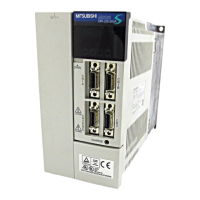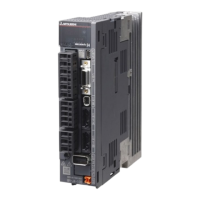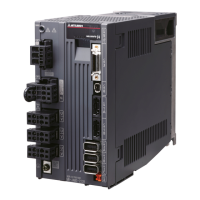What to do if the Mitsubishi Electric Servo Drives LED is not lit or flickers?
- Ttimothy27Jul 31, 2025
If the LED on your Mitsubishi Electric Servo Drives is not lit or flickering, there could be several reasons: * A power supply voltage fault or a faulty servo amplifier: These issues will not be resolved by disconnecting connectors CN1A, CN1B, CN2, and CN3. * A short in the power supply of CNP1 cabling: Disconnecting connectors CN1A and CN1B should improve this. * A short in the power supply of encoder cabling or a faulty encoder: Disconnecting connector CN2 should improve this. * A short in the power supply of CN3 cabling: Disconnecting connector CN3 should improve this. * An alarm occurs: Refer to Section 10.2 and remove cause.





